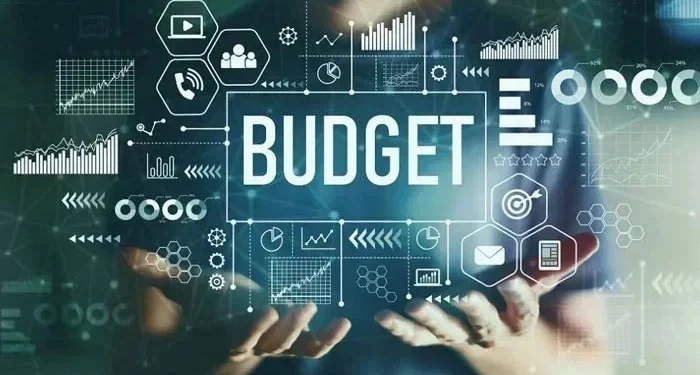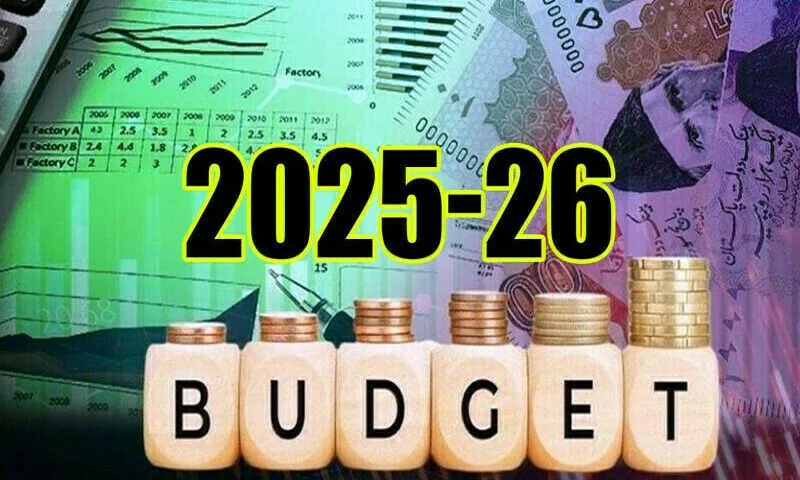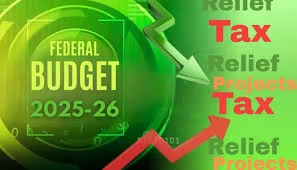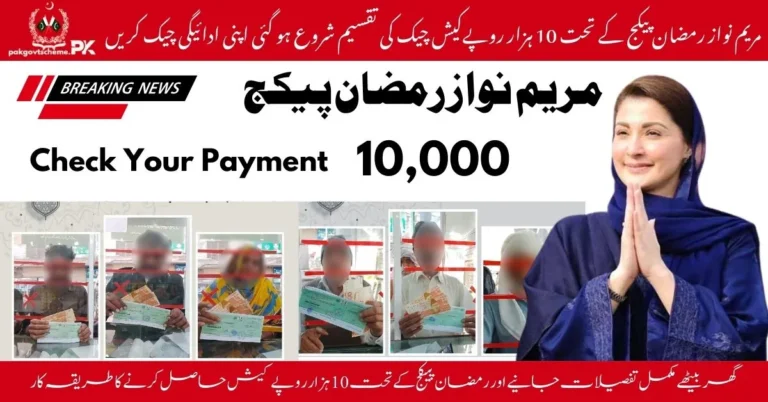Pakistan Budget 2025-26: Key Highlights & Sector-Wise Analysis
The Pakistan Budget 2025-26, passed on June 10, marks a defining phase in the nation’s economic trajectory. With an eye on recovery, transparency, and public-centered development, the federal government has introduced a wide range of fiscal reforms, sectoral investments, and compliance measures. From tax restructuring to sustainable development and digital oversight, this budget is designed to tackle Pakistan’s economic fragility and boost long-term growth.
In this comprehensive analysis, we explore the budget’s major highlights and its sector-wise impact, offering clear insights into what it means for citizens, businesses, and the economy as a whole.
Total Budget Size and Fiscal Goals
The total size of thePakistan Budget 2025-26 is Rs. 17.6 trillion, slightly down from last year’s Rs. 18.9 trillion. This reduction reflects a conscious effort by the government to tighten fiscal control and maintain a deficit of 4.8% of GDP—down from 5.9% in Pakistan Budget 2025-26. The focus is on cutting unnecessary expenses, enhancing domestic revenue collection, and aligning with IMF fiscal targets.

Defense Sector – A 20% Increase in Allocation
A significant aspect of this year’s budget is the 20% hike in defense spending, raising the allocation to Rs. 2.55 trillion. This move underscores Pakistan’s strategic focus amid rising regional tensions. The government justifies the increase as essential to ensuring military preparedness and strengthening national security. While some sectors have questioned this allocation, officials emphasize it as a long-term investment in safety and sovereignty.
Read More: BISP Budget 2025-26: Rs722.48B Allocated for BISP, Rs10.23B for Poverty Division
Taxation Reforms – Compliance Without New Burdens
Instead of burdening citizens with new taxes, the government aims to achieve its Rs. 14.13 trillion tax target through stricter enforcement and modernization:
- Direct Taxes: Rs. 6.9 trillion
- Indirect Taxes: Rs. 7.23 trillion
- Non-Tax Revenue: Rs. 5.17 trillion (from levies, surcharges, SBP profits)
Key Measures for Enforcement:
- AI-based digital audits
- E-commerce monitoring
- Tracking large transactions
- Mandatory digital invoicing
The goal is to raise the tax-to-GDP ratio to at least 10% (currently under 9%), without introducing fresh financial strain on ordinary Pakistanis.
Read More: New School Nutrition Initiative Gets Rs 7B for School Meal Program 2025-26
Crackdown on Non-Filers
One of the boldest steps taken in Pakistan Budget 2025-26 is the severe restrictions on non-filers. Individuals not on the active tax list will be barred from:
- Purchasing vehicles
- Buying property
- Opening bank accounts
This move is expected to push more people into the tax net, increasing transparency and national revenue.

E-Commerce and Online Shopping Tax
In the Pakistan Budget 2025-26 to regulate the booming online shopping sector, an 18% sales tax will now apply to all e-commerce deliveries. This tax will be collected by courier services at the time of delivery. This inclusion is expected to formalize a major part of Pakistan’s digital economy and reduce tax evasion in the sector.
Read More: Honhaar Scholarship 2025-26: CM Punjab Allocates Rs 15 Billion for Youth Empowerment
Pension Reforms and Salary Caps
To control public expenditure, family pensions will now be capped at 10 years after the death of the pensioner’s spouse. Furthermore, retired government employees who are re-employed will have to choose between receiving a salary or a pension, not both.
These reforms are aimed at reducing long-term pension liabilities and ensuring that funds are directed to more pressing national needs.
Development Budget – Rs. 1 Trillion PSDP Allocation
The Public Sector Development Program (PSDP) has been allocated Rs. 1 trillion under the Pakistan Budget 2025-26, with Rs. 682 billion going to federal ministries. The main focus areas include:
- Water resource management (dams, canals)
- Energy sector modernization
- National highways and roads
- Healthcare and education
- Digital infrastructure
This reflects the government’s intention to invest in long-term productivity and service delivery.
Real Estate and Housing Sector Relief in Pakistan Budget 2025-26
In a move to make housing more accessible, the government has reduced withholding tax on property deals:
- From 4% to 2.5%
- From 3.5% to 2%
- From 3% to 1.5%
Additionally, the government has proposed removing the 7% Federal Excise Duty on the transfer of commercial and residential plots, further reducing transaction costs.
For low-income families, a tax credit is being offered on the construction of 10 marla or 2000 sq. ft. houses, encouraging homeownership and affordable living.
Read More: CM Punjab Bikes Scheme for Students – Online Registration
Stamp Duty Cuts in Islamabad
To support citizens purchasing property in the federal capital, the stamp duty has been slashed from 4% to 1% in Islamabad. This will significantly lower the entry cost of real estate transactions.
Electric Vehicles (EV) and Sustainability
In support of the EV Policy 2026–30, a 5-year levy on petrol and diesel vehicles has been announced. This revenue will go toward making electric vehicles more affordable, signaling the government’s shift toward a greener transport future.
Additionally, to balance revenues, an 18% GST on solar panel imports has been proposed, although this may raise some concerns regarding clean energy adoption.
Read More: Good News for people Govt rejected 18 percent solar panel tax
Debt Servicing – A Major Burden
Debt servicing remains the single largest expenditure in the Pakistan Budget 2025-26:
- Interest payments: Rs. 8.2 trillion
- Pension payments: Rs. 1.05 trillion
- Subsidies & Grants: Over Rs. 3 trillion
These figures highlight the severe pressure of non-development expenditures, which limit space for fresh investments unless debt is managed more efficiently.
Economic Outlook – Signs of Hope
Despite challenges, the government projects a GDP growth of 4.2% and a decline in inflation to around 4.7%. Positive indicators include:
- Stabilization of exchange rate
- Better energy availability
- Increase in exports and remittances
- Fiscal discipline and policy continuity
These forecasts, though optimistic, will depend on the successful execution of proposed reforms.

Sector-Wise Summary of Budget 2025–26
| Sector | Key Highlights |
|---|---|
| Defense | Rs. 2.55 trillion allocation (+20%) |
| Taxation | Rs. 14.13 trillion target; No new taxes |
| Development | Rs. 1 trillion PSDP |
| Housing | Tax credit for low-cost homes; Lower withholding tax |
| Pension | Time cap of 10 years; One income rule for retirees |
| Property | Stamp duty cut in Islamabad; No FED on transfers |
| E-commerce | 18% tax at delivery; Courier-based collection |
| Transport | 5-year levy on petrol/diesel vehicles |
| Energy | 18% GST on solar panels |
| Debt | Rs. 8.2 trillion in interest payments |
Read More: Rs. 3.5 Billion Allocated for Minority Card – Budget 2025–26
Final Thoughts
The Pakistan Budget 2025-26 is a transitional fiscal roadmap, steering the country away from unsustainable practices and toward a disciplined, accountable, and development-focused economy. While critics may highlight the risks of reduced spending and increased compliance pressure, supporters argue that these steps are necessary to restore economic credibility.
By addressing tax evasion, promoting housing and sustainable transport, and restricting misuse of public funds, this budget holds the potential to deliver public prosperity and economic resilience—provided it is implemented with consistency, transparency, and fairness.







